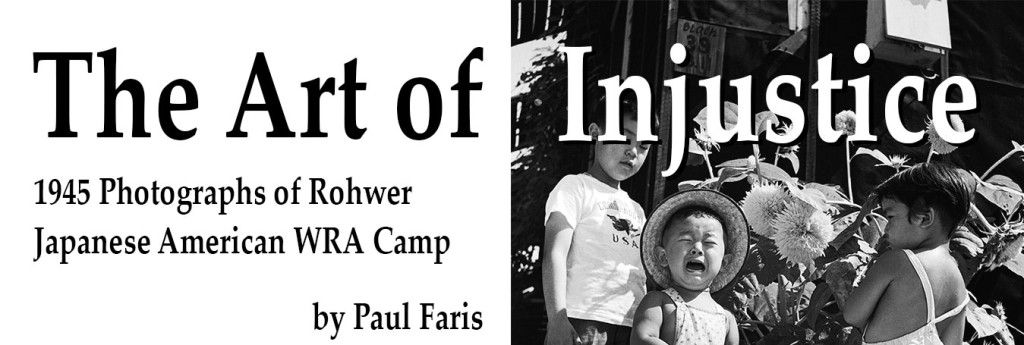New Exhibit! The Art of Injustice: 1945 Photographs of Rohwer Japanese American Internment Camp by Paul Faris
On display starting November 15 through April 5, 2015 from 12 – 5 pm on Saturdays and Sundays
The exhibit not only features rare photographs but focuses on the very real people within the frames and what became of them in the postwar years. This represents the first step in bringing the collection to the West Coast. The exhibit is the work of Professor Sarah Wilkerson Freeman (Arkansas State University) who was contacted by a brother and sister whose deceased parents (Paul and Ann Faris) initially visited the Rohwer Japanese American internment camp in July 1945 and returned to document the closing of the camp that fall. Paul Faris photographed the artwork for possible publication in Beauty Behind Barbed Wire: The Arts of the Japanese in Our War Relocation Camps by Allen H. Eaton. The Farises visited with many artists and their families. Henry Sugimoto, trained at the California College of the Arts (formerly California School of Arts and Crafts), served as host and guide. Another CSA artist, Sadayuki Uno, invited Faris to photograph him at work in his studio/barrack. Faris also photographed interiors, outdoor spaces, and the cemetery, which featured a monument honoring the Japanese-American soldiers who left Rohwer, joined the US Army, and died fighting in World War II. Ann Faris interviewed dozens of the internees, many originally from Stockton, Oakland, and San Francisco, and spent decades trying to keep in touch with those she met in the camp.
Future Programs:
Dr. Freeman will be conducting interviews with those who spent time in the Arkansas camps to add more voices and documentary quality materials to future exhibitions. If interested in an interview, please contact Dr. Sarah Wilkerson Freeman, Professor of History and Curator, 901-240-3961, sarahwf@astate.edu
Please check our website or sign up for the email newsletter for upcoming free public programs.

